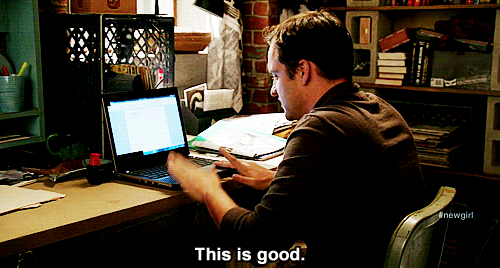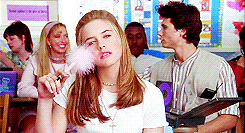8 Steps to A Successful Waitlist Letter
/Oh spring, the time of year known for blooming flowers, frequent showers, and of course either the pure ecstatic joy of getting into your dream college…or the utter crushing heartbreak of getting rejected. If you’re waitlisted, don’t give up hope just yet. Especially this year as colleges put more students on waitlists to ensure they have a full class come fall amidst an increasingly turbulent admissions season. According to a recent op-ed in the New York Times:
“The number of college applications filed through the Common Application, the single online application now used by more than a thousand institutions, has jumped 30 percent over the past three years.”
Translation? Due to the rising number of applicants, there are more students being deferred and waitlisted than ever before.
So what does that mean for you? Get out your handy dandy writing tools because it’s time to draft yet another letter!
Wait, you need to write something new? Again? After sending what seems like a magnum opus of personal essays last fall? Sorry, but yes.
Many students have been accepted after sending a waitlist letter or what’s known as a “letter of continued interest.”
The waitlist letter is your last chance to show “demonstrated interest” and maybe get on the admit list if enough students don’t accept. In fact, some colleges are notorious for accepting fewer students than they need and then filling up their freshman class with the waitlist (this way, they place higher on the US News & World rankings…shady, I know). So you may have a better shot than you think. At the very least, you’ll know you’ve done everything you could.
According to US News, more students will be added to waitlists — and accepted from waitlists — because colleges are less certain than ever about filling their freshman classes. The same held true in the 2022 admissions season, according to Time.com. So take a deep breath, accept the results, and start crafting your letter.
Here are 8 steps to a successful college waitlist letter that will get noticed:
1) Find Your Specific Admissions Representative
First, in terms of format, keep in mind that this is an actual letter with a Dear and Sincerely field, not a more creative personal essay. In this letter format, the "Dear ____" part is everything. Addressing the general admissions office is a common mistake - always address the individual admissions officer dealing with your application. You can normally find this in your direct admissions communications (like the waitlist letter you received) and/or on the website (each admissions officer normally has a region they’re responsible for). Ask your counselor for help or call the admissions office directly if you’re still lost.
No:
Dear Vanderbilt Office of Undergraduate Admissions,
Yes:
Dear Ms. Shuster,
2) Be Yourself in Tone
Even though the waitlist letter itself has a formal outline, you should still sound like yourself and not a stiff, formal version of you. For example, starting with “It is with my sincere appreciation” sounds too 17th century. Their eyes would glaze over immediately. Overly formal writing is generally too wordy and feels like you’re wearing your “adult” corporate suit, but it doesn’t really sound like you. For example, try replacing “undoubtedly” with something more enthusiastic and less formal like “in a heartbeat.”
No:
It is with my sincere appreciation that I would like to thank those that allowed me another opportunity at attending the school of my dreams by offering me a place on Vanderbilt’s waitlist.
Yes:
I would like to thank you sincerely for allowing me another opportunity to attend the school of my dreams by offering me a coveted place on Vanderbilt’s waitlist.
3) Be Specific in the Critical “Why This College” Section
When writing your waitlist letter, the little details are everything. Like the “why this college” essay, your waitlist letter should sound like a love letter to this school. Be specific on how exactly your goals align with their institution so your letter doesn’t sound like an empty statement. What excites you about the college? You should bring up at least two to three things you love that make this college your top choice. You don't have to go too deep into them - they know what their school has to offer, they just need to know what in particular appeals to you about their college to see where you'd fit in.
No:
I strongly believe that my professional and personal goals align to that of your own institution; as a result, Vanderbilt has long been my first choice. If I am offered a place in the Class of 2022, I would undoubtedly accept it.
Yes:
I have no doubt that my professional and personal goals align with Vanderbilt’s own emphasis on intellectual curiosity, just one of the many reasons Vanderbilt remains my first choice.
4) Be Specific in Your Goals for the College
In fact, make sure you add a paragraph about what you will bring to the campus community: clubs you will lead/join, research opportunities you would love to take, etc. You want your passion to come across more than anything. For this waitlist letter to make a difference, you have to do your research and name specific professors or research opportunities that you’d engage in. Otherwise, it sounds too generic and like you’re copying and pasting the same letter for every school (a major red flag).
No:
If I am allowed a position, I would continue my efforts by contributing to the research that the facility is currently undertaking and the universal diversity and equality Vanderbilt champions.
Yes:
If I am allowed a position, I would continue my efforts by contributing to the research that the Kennedy Center is currently undertaking, specifically the treatment and diagnosis of children with autism spectrum disorder.
5) Share What’s Changed Since You Submitted Your Application
Did you take on a part-time job to help with college expenses? Or did you complete an impressive research project? You should alert your colleges to anything new and exciting since you’ve applied that will help tip the scales in your favor. Also, make sure you’re very clear on what is new in your letter - they may not have time to revisit your application in depth.
No:
My nomination as a Miami Herald Silver Knight has recognized my work.
Yes:
Since I sent in my application, I’m so excited to share with you that I was nominated as a Miami Herald Silver Knight for my volunteer work.
6) Keep Your Tone Positive
And whatever you do, do not express your disappointment in any way, shape, or form. You are absolutely allowed to feel upset, and one good way of addressing those feelings is to journal about your reactions privately. In this formal letter, however, the tone needs to stay positive and excited. Show your appreciation for being added to the waitlist: many students don’t have that privilege, and so you should always sound courteous.
No:
While disappointed with my admissions decision, I am so grateful for the opportunity to be looked over once more within what I know is an arduous complicated process.
Yes:
Once again, thank you for considering me for your waitlist. Only your incredible access to undergraduate research and interdisciplinary excellence will allow me to achieve what I have been working for, and what I will continue to work for.
7) Don’t Wait On Sending Your LOCI
An admissions officer recently told a student of mine that waitlist offers are decided on a rolling basis and urged her to submit her waitlist letter “as soon as possible.” Before you begin speed writing, however, remember that you still want to take your time developing your content as this is your last chance to make a winning second impression. Rushing through the draft can also lead to an overly emotional tone and careless typos. Don’t believe me? See what this Notre Dame admissions counselor had to say:
“In my experience, the students who give themselves some time between being waitlisted and writing are usually able to better explain why they want to attend Notre Dame more than any other college.”
8) Send Your LOCI To Schools Where Aid Won’t Be An Issue
A former admissions officer told me anonymously, “My honest take on this is the only thing that matters on waitlist movement is if a student is full-pay. It’s the sad truth but the aid is all given out by waitlist time, and they are looking at who can pay. Now this might have evolved, especially since kids are applying to SO many more schools now, but waitlist movement is a financial play for most schools.”
If you’re drafting your waitlist letter and would like some professional help, don’t hesitate to reach out.
Editor’s Note: This post was originally published on 4/26/19 and has been updated with new relevant information.
































